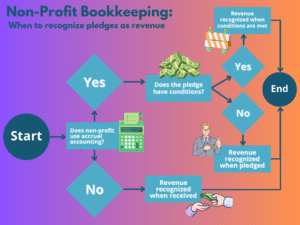Accounting can feel like a maze of confusing rules and counterintuitive logic—especially when you’re first learning the ropes. If you’ve ever wondered why a bank account increases with a debit, or why debits and credits always have to match, you’re not alone! In our latest YouTube video, Lindsay Kline, founder of Great Bookkeepers Wanted and host of the By The Books podcast, brings clarity to these concepts using a fun, visual approach with colorful cubes and real-world examples.
Why Are Debits and Credits So Confusing?
Many of us associate “debit” with decrease and “credit” with increase, but in accounting, it’s not always that simple. Sometimes it’s the opposite! Lindsay suggests thinking of debits and credits as “left” and “right” instead of “up” and “down.” In most accounting software, debits are on the left and credits are on the right. This simple shift in perspective can help you avoid a lot of confusion.
The Accounting Equation: Assets = Liabilities + Equity
At the heart of every transaction is the accounting equation. Lindsay uses green cubes for assets, blue for liabilities, and yellow for equity to show how everything must balance. Whether Sally is receiving a loan from her parents, buying lemons and sugar, or making sales, every transaction is recorded in a way that keeps the equation in check.
Real-World Example: Sally’s Lemonade Stand
Let’s follow Sally, an eight-year-old entrepreneur, as she starts her lemonade stand:
- Getting Started: Sally’s parents give her a loan. She receives cash (asset increases, debit) and records a loan (liability increases, credit).
- Buying Supplies: Sally spends cash on lemons and sugar. Her cash (asset) decreases (credit), and her expenses (cost of goods sold) increase (debit).
- Making Sales: Customers buy lemonade. Sally’s cash (asset) increases (debit), and her sales revenue (equity) increases (credit).
- Handling IOUs: A friend buys lemonade on credit. Sally records accounts receivable (asset increases, debit) and sales revenue (equity increases, credit). When the friend pays her back, cash increases (debit) and accounts receivable decreases (credit)—both are assets, but one goes up and the other goes down, keeping the books balanced.
- Paying Back the Loan: Sally pays her parents back. Cash (asset) decreases (credit), and the loan (liability) decreases (debit).
- Owner’s Draw: Sally pays herself. Cash (asset) decreases (credit), and equity decreases (debit).
The Big Picture: It All Has to Tie
What matters is that the total assets always equal the sum of liabilities and equity. And, of course, debits must always equal credits.
🎥 Want to see these concepts come to life?
Watch the full YouTube video for a fun, visual walkthrough of Sally’s Lemonade Stand and discover how debits, credits, and the accounting equation really work in practice!
You’re Not Alone—Join Our Community!
Learning accounting doesn’t have to be a solo journey. If you have questions or want to connect with other bookkeepers, Lindsay and the Great Bookkeepers Wanted community are here to help.
👉 Visit gbwnow.com for free resources, guides, and training to help you start, grow, and streamline your bookkeeping firm.
👉 Join the Bookkeepers Club Facebook Group to connect with fellow professionals, ask questions, and share your experiences in a supportive environment.
What accounting principle do you find most confusing? Share your thoughts in the comments or join the conversation in our Facebook group!





